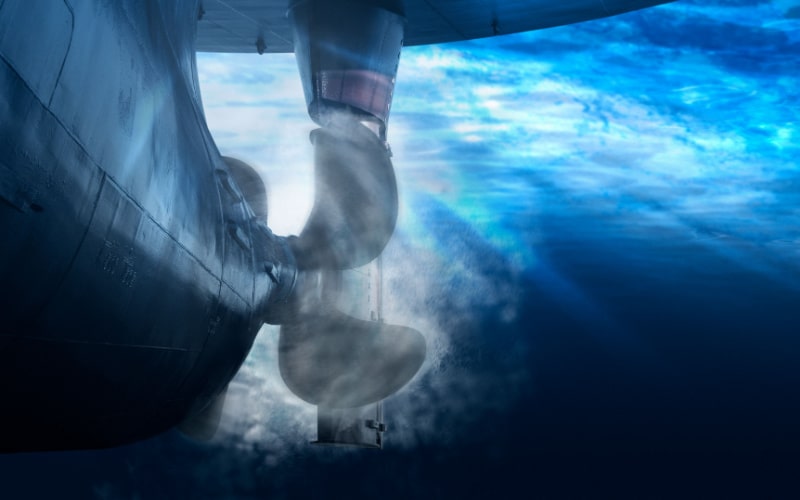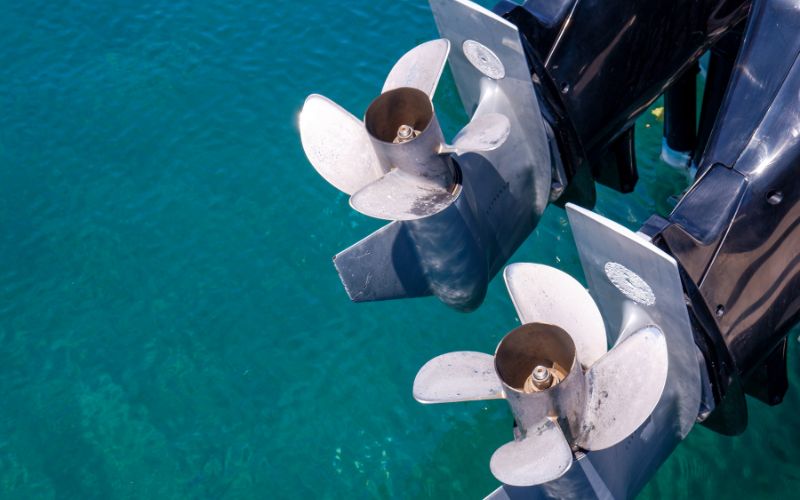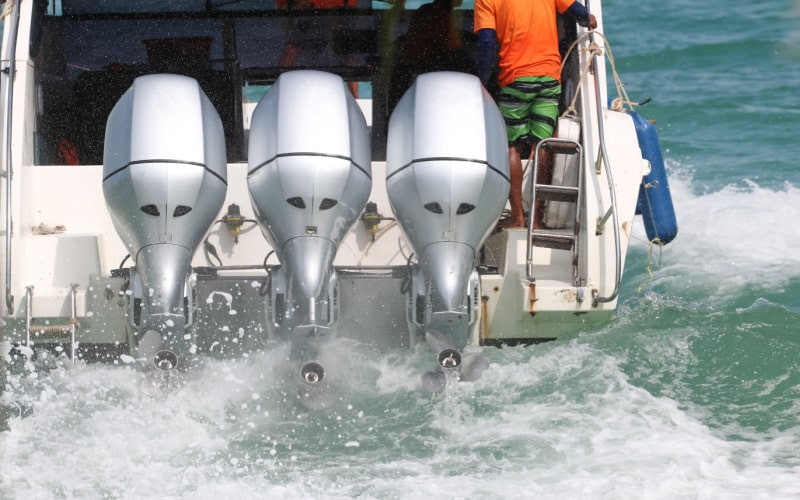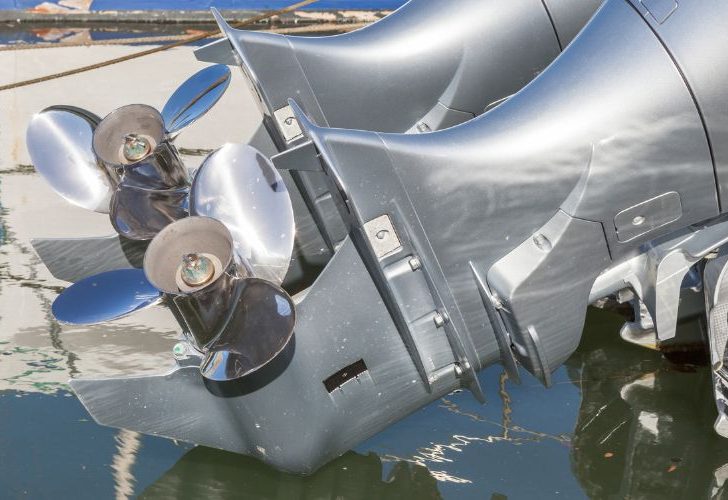Wondering why the propellers on your engine look slow, still, or even as if they were moving backward while they are spinning?
You’ve come to the right place to get answers.
The main reason why your propeller can look slow, still, or like it’s moving backward is due to a phenomenon known as the wagon-wheel effect.
The wagon-wheel effect is an optical illusion in which a spoked or bladed wheel (such as a propeller) looks like it is rotating slower or in the opposite direction. It is named after the appearance of wagon wheels in early Western movies.
Table of Contents
The Wagon-Wheel Effect

You’ve probably witnessed it a bunch of times when watching a fan or a propeller spin. Maybe you’ve even seen it while looking at the wheels of an airplane.
As the spinning speeds up, it starts to look like the propeller or the wheels actually stopped moving, or even started rotating in the opposite direction.
This is a strange phenomenon, but it is not uncommon. There is a name for it: the wagon-wheel effect.
Even those that don’t own a boat with a propeller on its engine have probably seen this effect in movies or videos.
Here is a nice video that showcases the wagon-wheel effect in action:
Other Causes Of The Wagon-Wheel Effect
There are other processes that are known to create similar effects. For example, let’s take a look at a scientific paper published all the way back in 1967, in the journal Nature.
According to the author of this paper, humming at specific frequencies can cause our eyes to vibrate, which may create the illusion of a stroboscope.
A stroboscope (often referred to as a strobe) is an instrument that makes objects moving cyclically (like propellers) look stationary or slower. It is usually a rotating disk that creates constant brief light flashes. It is used to measure the frequency of rotating or vibrating objects.
It may sound weird, but the humming of propellers can actually be the reason why they look slow, still, or like they are moving backward!

Another thing that can cause the wagon-wheel effect is the vibration created by eating crunchy foods! Yes, you read that correctly.
If you eat crunchy foods while watching a propeller spinning, you may experience the wagon-wheel effect. Try it out yourself and see if it works!
Neuroscientists have been exploring this phenomenon. However, they haven’t come to a definitive conclusion on why it happens.
They do say that it always happens under constant lightning. This means that you are more likely to experience the wagon-wheel effect during daylight or any kind of constant lighting.
One of the main theories on why we see propellers as moving slower, standing still, or moving backward is due to how our brains work. The brain creates various interpretations of images that could be perceived as unclear or ambiguous.
Therefore, one of the interpretations of a moving propeller could be an image of it standing still. Some scientists even claim that our vision works similarly to a camera. They believe that our eyes process distinct frames and not continuous movement.
Let’s take a more detailed look at how propellers (and other spinning wheels) can behave under certain conditions.
Stroboscopic Conditions
When a rotating object, such as a propeller, is placed under stroboscopic conditions (such as a camera or a stroboscope), its visibility will be broken into a series of short movements. We can call these movements episodes.
These episodes are known as frames.
Imagine a propeller with four blades whose actual direction of rotation is clockwise. In this scenario, when one blade is at 12 o’clock, the propeller may become visible for the first time.

We see the propeller as stationary if the next occurrence of us being able to see the blade happens when the 9 o’clock blade moves to 12 o’clock. Since we saw both blades right at the same spot, it seems as if it’s the same blade that hasn’t moved.
But, if that 9 o’clock blade has moved to the 11:30 position, we will see it as if it was moving backward.
If the blade moves to the 12:30 position during the second instance of visibility, it will give the impression that the wheel is moving forward, albeit more slowly than it is.
The effect is based on a motion perception characteristic known as beta movement. Let’s explain it in simple terms. Imagine that we’re looking at two similar-looking objects, such as propeller blades, that are close to each other.
If these objects are moving, we will often perceive them as a single object. Hence, we see these propeller blades as a single static blade.
Dangers of the Wagon-Wheel Effect
Due to the illusion created, some spinning machinery, such as lathes, might be hazardous to operate in artificial light because they may appear to be stopped or moving slowly. For this reason, single-phase lighting is discouraged in factories and workshops.

For instance, a factory lit by basic fluorescent lighting on a single-phase supply may flicker at twice the main frequency. Consequently, any mechanism rotating at multiples of this frequency will seem completely stationary.
Workers who operate various types of rotating machinery may be seriously at risk since some of the most common types of AC motors are locked to the main frequency.
A complete 3-phase supply can be used to power the lighting, or high-frequency controllers can be used to drive the lights at safer frequencies.
Another choice is conventional incandescent light bulbs, which use filaments that glow constantly with little variation, but at the cost of higher power consumption.
To counteract this impact and save money on operating costs, smaller incandescent lights can be employed as task lighting on equipment.
Apparent Rotation
Boat propellers can also appear to be slow, still, or even moving backward due to a phenomenon known as the “apparent rotation” of the propeller.
This phenomenon is caused by a combination of factors, including the speed of the boat, the shape of the blades, and the viewing angle of the observer.

It is actually quite complex, but we will try to break it down for you as simply as possible.
The speed of the boat plays a significant role in the apparent rotation of the propeller. As the boat moves through the water, the propeller blades create a disturbance in the water that creates a wake behind the boat.
The speed of the wake and the speed of the propeller blades both contribute to the apparent rotation of the propeller.
The shape of the blades also plays a role in the apparent rotation of the propeller. Propeller blades are typically designed with a specific curvature to maximize their efficiency. This curvature can cause the propeller to appear to rotate more slowly or quickly.
Finally, the viewing angle of the observer also plays a role in the apparent rotation of the propeller.
The apparent rotation of the propeller will look different depending on whether the observer is looking at the propeller from the front, the side, or from behind the boat. This is because the observer’s perspective affects the apparent movement of the propeller blades.
To conclude this segment, the apparent rotation of a boat propeller is a complex phenomenon that is influenced by a combination of factors, including the speed of the boat, the shape of the blades, and the viewing angle of the observer.
Understanding these factors can help boaters better understand the behavior of their propeller and how to optimize its performance.
Conclusion
There you have it. The reason why your propeller can look slow, still, or even moving backward is due to a phenomenon known as the wagon-wheel effect.
The wagon-wheel effect occurs when viewing rapidly spinning objects under specific conditions. That also includes objects filmed by cameras. Naturally, propellers fall into that category, so they may appear to be standing still or moving slower, even when moving at full speed.
Another reason this happens is due to a phenomenon called apparent rotation, which can be caused by several factors. Some include the speed of the boat, the shape of the blades on the propeller, and the viewing angle.
These phenomena will not drastically impact your boating experience. Still, it is interesting to know about them and see how they can affect the way you see the propeller on your boat.
If you have any questions about these phenomena, leave them in the comments

I created this site to help people – to help you – with your boat problems. Instead of helping one person at a time, I want this website to be the “one-stop-shop” for everyone’s boating concerns. Read more.

